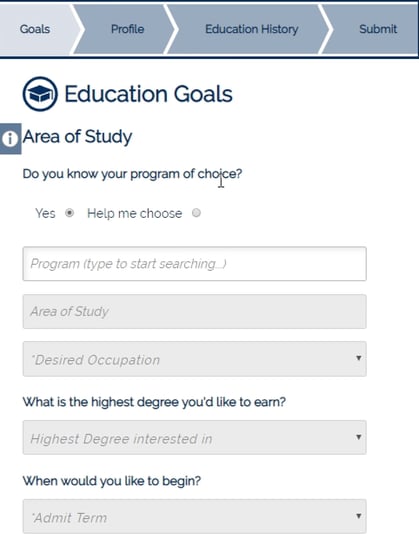Admissions and the Common App: Is your Online Application hurting your institution?
Over the past couple of years, the Higher Education industry has gone through an unprecedented level of innovation. Technology, competition, and market expectations have collided to create this perfect storm.
This is highlighted by the varied “products” (types of programs) offered to students. In the past, institutions offered a generalized set of offerings that fit into a standardized degree package: associate, undergraduate, master’s, and doctorate. Now, however, the very definition of what an institution offers its students is changing.
The definition of an institution’s “product” is changing?
Although that may seem like a provocative statement, let me describe why this is true.
Although students continue to earn and receive 2 and 4-year degrees, institutions are realizing that they can broaden their reach by providing more flexibility in how their customers can take advantage of the curriculum they offer.
This means that many students might use the curriculum to accomplish something other than earning a traditional degree at that institution:
- Adding rigor to High School degree program
- Hybrid programs that allow students to earn an Associate’s degree while finishing their High School degree
- Online-only degree programs
- Community / Technical / Junior college programs targeted to transferring to specific 4-year institutions
- Taking individual courses that count toward another institution’s 4-year degree
- Targeted Technical or Professional Certificate Programs
This means that students attending these institutions can have wildly different experiences and goals.
Enter the Online Application
The online application is the first step of engaging prospective students across all of the different offerings an institution provides. Because historically, the admissions process (and online applications) were focused on admitting students to well-defined 2 or 4 year programs, the admissions process was structured around matching students with openings in the degree programs offered.
You want to earn a bachelor’s degree in accounting? We have X spots in that degree program. You provide us information to help us decide on whether to admit you into that program.
These new offerings completely change the relationship between the student and the institution and by extension, the purpose of the application. This makes traditional online applications, such as the Common App a barrier to reaching those students.
Fixing the Online Application
As Mutara has worked with institutions wishing to address those challenges, we’ve identified a number of best practices:
Step 1
The first step is to take control over your online application. Although there are some benefits to utilize the common application to allow students to provide standardized responses to apply to many institutions at the same time, this comes at a significant cost to innovation, differentiation, and engagement. Because the online application is the first place your prospective students actively engage with you, it’s critical that this is a simple and easy to use experience.
Step 2
The second step is to understand each of your product offerings. What are the prospective student's goals within each offering? What is needed internally to admit and enroll the student within that offering? By the request of customers, Mutara, has created a service offering to you take a holistic look at their admissions journey.
Step 3
The third step is to create / update your online application to help guide the candidate through the process in a simple and easy to use manner. This begins with asking questions to understand the candidate’s education goals.

The responses to these questions will tailor the experience of the rest of the online application to appropriately engage the candidate.
Step 4
The last step is to define your engagement / nurturing strategy, so that the candidate stays engaged throughout the rest of the admissions process (all the way through to enrollment). How will the candidate know the status of their application? How often will the institution reach out to the candidate – and in what manner?
Want to learn more?
If you’d like to learn more about how Mutara can help your institution increase engagement with your prospective students, we’d be happy to meet with you.


